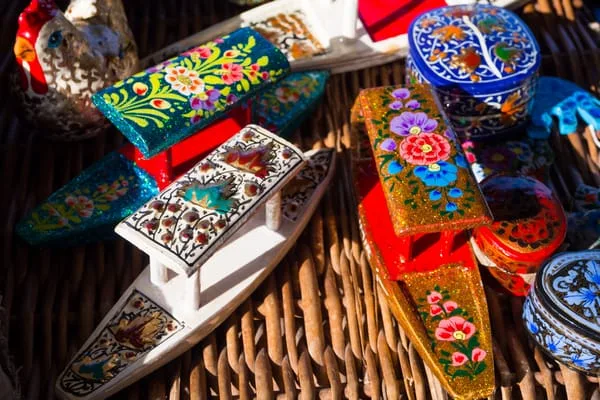Kashmir is admired across the world for its breathtaking natural beauty and the true essence of the region also lives in its centuries-old traditions of art and craftsmanship.
For generations, the valley has been home to artisans who mastered delicate weaving of Pashmina, the intricate carving of walnut wood and the colorful detailing of papier mâché.
These creations are not merely commodities for trade but treasured symbols of culture and memory, passing stories of heritage and pride from one generation to the next.
They represent the enduring spirit of a community that has safeguarded its identity through art even while facing shifting circumstances over centuries.
Although these crafts trace their roots back hundreds of years, they have never remained frozen in time. Instead, they have grown, adapted and evolved with the challenges of changing eras. From the upheavals of political transitions to the economic pressures of modern markets, Kashmiri artisans have constantly adjusted their methods while keeping the core of their traditions alive.
In today’s world, Kashmiri art balances between heritage and innovation, where old motifs blend with modern sensibilities to create something timeless yet relevant. Once it was restricted to local bazaars now finds place on global screens, as digital platforms connect valley craftsmen directly with international audiences.
Social media and online marketplaces have transformed the way artisans showcase their work, reducing dependency on middlemen and allowing them to earn a more dignified share of profits.
A hand-carved walnut box or finely woven shawl can now reach homes thousands of miles away, sustaining livelihoods and reviving art forms once thought to be in decline.
The important ally in this revival has been the Indian Army through its initiative Operation Sadbhavana. By organizing workshops, exhibitions and training sessions, the program has helped artisans learn about modern design trends, branding and improved quality standards.
Such initiatives have reduced the isolation faced by many village craftsmen and connected them with broader networks, instilling hope for a sustainable future.
The engagement has also strengthened trust and encouraged younger generations to look at handicrafts as a viable profession rather than a fading tradition.
It is an example of how institutions, when working with sensitivity toward cultural identity can contribute to local prosperity while helping preserve intangible heritage.
Perhaps the most inspiring change comes from the younger generation itself. Earlier, many young people hesitated to continue family traditions of craft due to limited opportunities and today they are giving these arts a new life by blending tradition with modern design.
Classic floral motifs on shawls are being reinvented into minimalist patterns, while Pashmina is now seen as a luxury garment and also as home décor in the form of cushions, throws and wraps suited to global tastes. Alongside this creativity, there is a growing focus on sustainability.
Workshops increasingly use natural dyes, adopt eco-friendly production practices and follow fair-trade principles, appealing to a new class of conscious consumers. This reimagining demonstrates the Kashmiri crafts are not relics to be confined to museums but living traditions that continue to evolve while preserving their roots.
The issues call for stronger protective laws, better supply chains and more institutional support to safeguard livelihoods while ensuring authenticity. Yet despite these hurdles, the story of Kashmiri craftsmanship is above all one of resilience.
Every shawl woven, every chest carved and every ornament painted reflects patience, skill and survival. These crafts narrate another tale – one of creativity, identity and hope. As Kashmiri art continues to travel across borders, it builds cultural bridges and strengthens connections, proving that heritage, when reimagined with vision and respect can continue to inspire and unite people across the world.


